- Bernard Preston homepage
- Citrus
- Lime Nutrition
Lime nutrition
Lime nutrition is loaded with anti-tumour and arthritis substances; the vitamin C and bioflavonoids alone make the fresh juice a must. Add to that the prevention of gum disease and you have a winner. I enjoy it every day in season on my salad.
Hauntingly delicious flavours and better nutrition is a large part of Bernard Preston's focus, firstly as a human being in love with life and secondly as a DC.
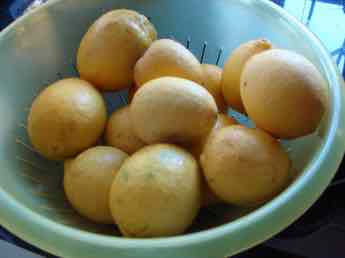
This page was last updated by Bernard Preston on 24th April, 2023.
Anyone committed to better health knows that eating your greens is vital; but honestly, I have known for years that a bean salad like the one below is really rather dull without lemon juice.
Add all the garlic and special extra virgin olive oil you like but it just is not the same without the enhancement of the piquant flavours of citrus.
It is always an exciting moment when you have your first real crop from a fruit tree. It's three and half years since we planted our lime and we have a harvest of over sixty.
They are so ripe that they are falling and so she who must be obeyed is making lime marmalade this morning. It is to die for.
The concentrated lemon juice from the grocery store is simply horrible, excuse my French but it just tastes and is awful. Plus they have to add various nasty chemicals to preserve it.
I will be honest; call me neurotic but despite all the assurances of the food-processing industry, I am afraid of all the chemicals they add to our condiments; is it just a coincidence that tumour rates are soaring?
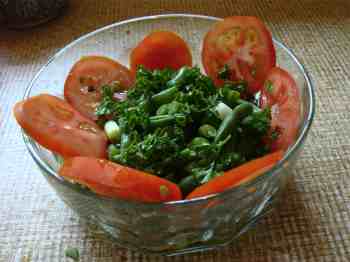
There is a simple solution for you if you have a garden. Plant a lemon or lime tree; better still both.
You see, the lime fruit is ripe several months before the lemon.
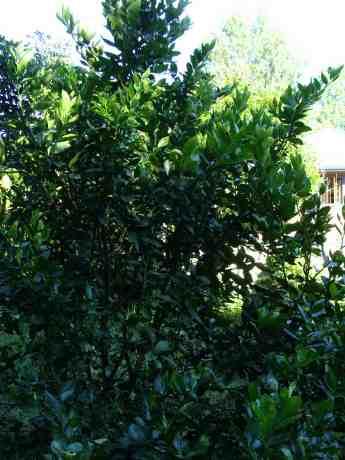
This tree is now three years old; we're about to enjoy our second crop. I have just counted 65 limes on it and one of the joys of citrus is that they go on flowering; there is a second crop of tiny fruit coming on.
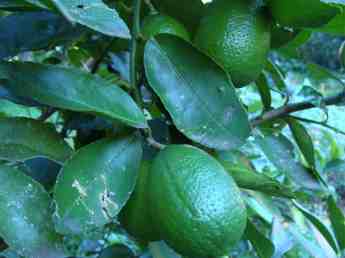
So now within a few short months we will have freshly squeezed lime juice on hand in the refrigerator for our salads.
You too could have a lime tree in your garden unless you live in a place like Chicago where I did my training; it is bitterly cold in the windy city in winter. And blisteringly hot and humid in the summer; it is inhospitable for citrus.
The best climates are several thousand feet above sea level; then there is no humidity. Places like Mexico City and Nairobi and Harare but I am not sure I would choose any of them. Hilton in South Africa is just perfect for me and my lime tree.
Now, what is so special about limes? Firstly, surely we have to mention the most amazing scent of the flowers, leaves and fruit. Just the smell of the juice gets my appetite going.
It is lemon and lime juice that makes your greens so palatable; they really bring out the flavour of beans, lettuce and parsley; somewhere sneak in a little cilantro and jalapeno too.
Lime nutrition
Understanding some of the basics of lime nutrition enables you grasp there are sugars but also vitamin C, bioflavonoids and phenolics; and a host of other micronutrients in citrus.
Also the pectin, a polysaccharide is a resistant starch that is particularly beneficial for the microbiome in the colon; it is known as a prebiotic. It is the food the bugs in the intestine feed on.
You can take the best probiotics on the market, or better still make kefir or sauerkraut to no avail if you are not eating the nutrients they need; food like the pectin in limes.
Beware incidentally of added pectin on a food label; it's a highly processed chemical.
Limonin
Limonin is the substance in citrus that combined with a sugar molecule gives it its sour taste; the amount is obviously higher in the lemon family. Once split from the glucose it is very bitter. Despite the fact that we may be averse to the flavour, it has decidedly beneficial properties.
- Anti-oxidant
- Anti-viral
- Protective of nerves
- Defense against colon, breast and many other tumours.
Typically food companies are planning ways to remove limonin from our citrus; they are hoping that less sour means folk will purchase more of their processed orange juice.
The OJ will be less sour, true but then there is loss of the protection that limonin provides against diseases like multiple sclerosis too. Eighty percent of brain cells are excited normally by glutamate neurotransmitters but excessive stimulation causes their death.
There are numerous research findings that limonin gives protection against this glutamate toxicity that destroys our brain cells.
Or to put it differently, a deficiency of limonin allows glutamate concentrations to rise to toxic levels.
And hence the interest of this DC; perhaps limonin might also be a factor in spinal cord cells that have been overexcited resulting in arm and leg nerve pain.
In short make sure your kids are exposed to lemon and lime nutrition so that
they too do not develop an aversion to the sour taste of citrus fruit. Interestingly, my grandchildren would rather enjoy a green bean salad with sour lemon or lime than straight from the pot.
It should be in the diet daily; as heart surgeon Dr Lundell recommends, return to the food that your great-grandmother once served. You can be sure she regularly provided fresh lime nutrition or lemon juice on hot days and used it lavishly in her salads.
We enjoy a fruit drink made from our citrus fruit list every morning; it is gratifying watching the Little People tuck in too. It has five fruits, including half a lemon and a lime; and takes only two minutes to halve and press.
Newsletter
Our newsletter is entitled "create a cyan zone" at your home, preserving both yourself and Mother Earth for future generations; and the family too, of course. We promise not to spam you with daily emails promoting various products. You may get an occasional nudge to buy one of my books.
Here are the back issues.
- Lifestyle and ideal body weight
- What are ultra-processed foods?
- Investing in long-term health
- Diseases from plastic exposure
- Intensive lifestyle management for obesity has limited value
- A world largely devoid of Parkinson's Disease
- The impact of friendly bacteria in the tum on the prevention of cancer
- There's a hole in the bucket
- Everyone is talking about weight loss drugs
- Pull the sweet tooth
- If you suffer from heartburn plant a susu
- Refined maize meal and stunting
- Should agriculture and industry get priority for water and electricity?
- Nature is calling
- Mill your own flour
- Bake your own sourdough bread
- Microplastics from our water
- Alternative types of water storage
- Wear your clothes out
- Comfort foods
- Create a bee-friendly environment
- Go to bed slightly hungry
- Keep bees
- Blue zone folk are religious
- Reduce plastic waste
- Family is important
- What can go in compost?
- Grow broad beans for longevity
- Harvest and store sunshine
- Blue zone exercise
- Harvest and store your rainwater
- Create a cyan zone at your home
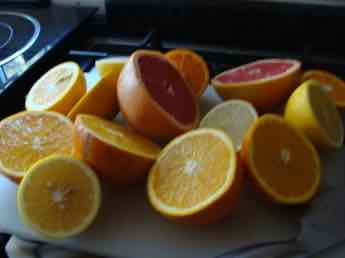
Only the pink grapefruit will not grow at this altitude and has to be bought.
- White oil manufacturers - make it yourself to protect your citrus from aphids.
Vitamin C
50mg of vitamin C per day will prevent scurvy, the disease associated with a frank deficiency. Because it is an antioxidant, working in harmony with limonin giving protection against tumours, optimal recommended levels have now been upped from the old RDA of 60mg to 120mg; we want to do better than simply not get scurvy. Lime nutrition is one good way to do just that.
An average sized lime, weighing 70g contains 20mg of vitamin C.
120g is quite a lot; if you were only getting your vitamin C from citrus that would mean about 6 limes per day. But of course many foods contain C, especially the pepper and chili family. It is not unreasonable to suggest each of us enjoy at least one citrus fruit per day in season to prevent a nasty tumour. A good dose of lime nutrition to make sure you are not counted amongst the one in eight who will get a malignant breast tumour; they call me a fanatic some times. So be it.
As an anti-inflammatory, vitamin C has been proved to reduce the pain and inflammation of both rheumatoid and osteoarthritis, of further importance for you and your DC. I find it so interesting that the good wife has swollen and ugly joints in her fingers but no pain; she can do anything and everything.
Limes and lemons are known as 'functional foods', preventing disease and promoting health.
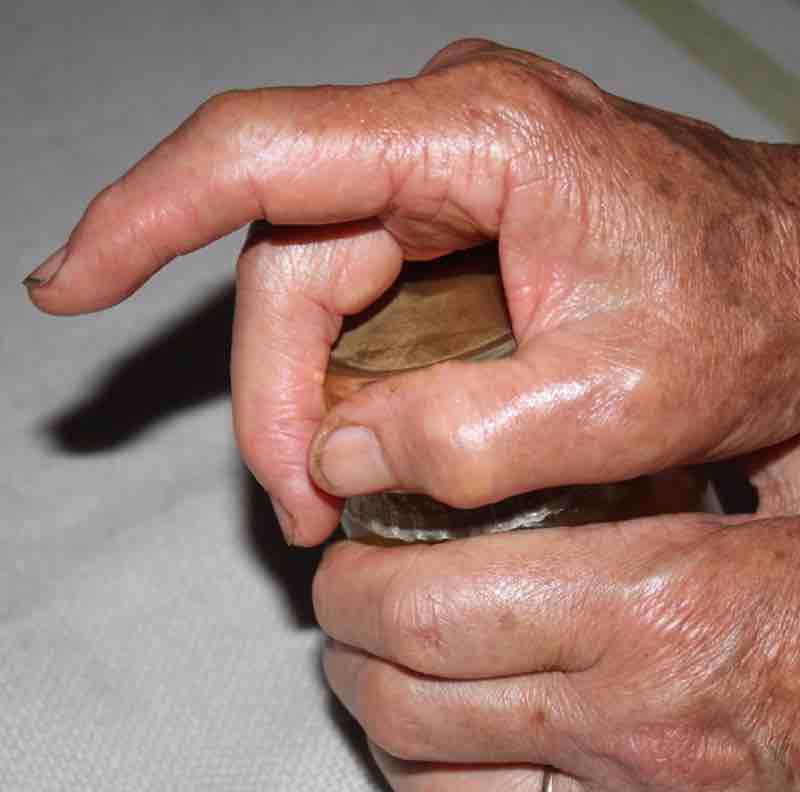 Painless rheumatoid arthritis
Painless rheumatoid arthritisBioflavonoids
Once more, the coloured foods like butternut, broccoli and limes have bioflavonoids which again have been shown to prevent cell division of cells with a malignant tendency; they reduce so-called 'oxidative stress' by mopping up free radicals. They are also known for their antibiotic effects, helping to protect you against the flu and other bacteria; enjoy your lime nutrition.
Researchers will in the future be able to tell us how many folk who enjoy lime or lemon juice every day succumbed to the Coronavirus.
The two most common flavonoids in lemon and lime nutrition are hesperidin and eriocitrin; 26 and 17mg respectively. Grapefruit are even higher at 30mg.
Interestingly, plants have these compounds to protect themselves against UV light and aggressive pathogens; by consuming them they pass on these effects to us. Research suggests that they resist acid hydrolysis in the stomach and arrive intact in the small intestine for absorption.
The American Journal of clinical nutrition (May 2004) reports that industrial processing reduces the polyphenol content; in particular they are removed from fruit juices to prevent discoloration and haze formation. They are sensitive to heating.
Prostate tumours
Citrus pectin is an indigestible starch found in the peel and pulp of lemons, limes, oranges and grapefruit. It is a long chain of glucose units, but they pass through the small intestine untouched. Initial studies show very promising results in biochemically relapsed prostate tumour patients[1].
Modified to make the chains shorter, researchers reporting in the Journal of Clinical Oncology[2], found that citrus pectin competes competitively with galectin-3, known to be involved in the spread of malignant prostate tumours.
When enjoying your citrus juice, make sure you include the pulp to maximise these benefits.
Limeys
British sailors were the first to use limes in the prevention of scurvy, a disease that killed millions, and so were called limeys by their enemies. The Brits have been growing them for at least four hundred years; originally they were probably imported from Holland. Many avenues of lime trees were planted.
I am a limey! Will you join me in enjoying the benefits of lime nutrition? Plant a tree if your climate lends itself. You may have to put them in a pot and bring them indoors in the harsh winter weather, as they do in Italy.
Citrus Juice Press
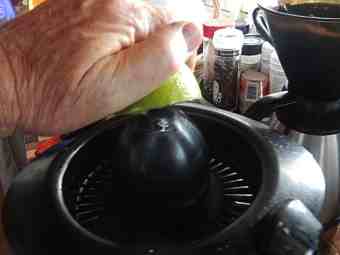
Actually I prefer a rotating or reaming citrus juice press; they get out more liquid and more important the pulp which is where much of the nutrient is found.
You can buy them on Amazon for around $30. They work equally well with limes and lemons.
For the one lime job I like this press; as I have on my green salad every day. Cleaning the machine for one fruit is too troublesome.
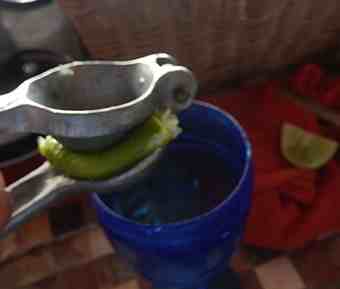
Update
A South African company has this week recalled a large batch of orange juice; apparently workers did not properly clean the equipment of a sterilising compound, a significant amount of which contaminated the juice; purchasing lime nutrition is no different.
More than half had already been consumed by the unsuspecting public.
In short, if you can prepare a food yourself, such as lime juice, why trust a food company to do it better? This is certainly no isolated incident. Fresh from your own garden, or the citrus farmer, is much healthier, and safer; tastes a lot better too. Make sure you use the pulp; that is where at least half the nutrients are, plus the fibre for your colon.
Just this morning I was treating a patient with a serious slipped disc. I had asked him to start having a glass of any freshly squeezed citrus every day; research shows that it helps with the healing of connective tissue. He remarked that the juice from a carton tasted so inferior to that prepared by his wife from a tree in the garden.
Lime marmalade
If the kitchen is a place you love, and marmalade on toast a family favourite, then this lime marmalade recipe is definitely for you.
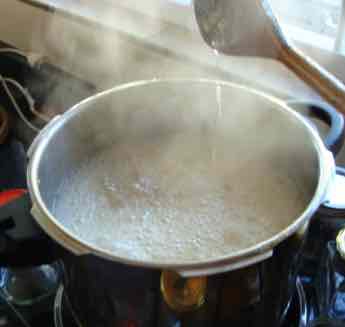
Lime marinade
Meat can be very tough; more recently we have started slaughtering our own chickens from the garden. Half of those adorable chicks turn into rapacious, noisy cockerels. Using a lime marinade for two days turns the meat into the most tender and juicy food.
Useful links
Bernard Preston
Bernard Preston majored in physics and chemistry, and education, before studying to become a DC. He brings this background to his understanding and use of nutrition in wellness; lime nutrition is just one of the many foods that his family enjoys every day.
Understanding the effects of bioflavonoids in lime nutrition is just one small part of his interest.
Did you find this page interesting? How about forwarding it to a friendly book or food junkie? Better still, a social media tick would help.
- Bernard Preston homepage
- Citrus
- Lime Nutrition
Address:
56 Groenekloof Rd,
Hilton, KZN
South Africa
Website:
https://www.bernard-preston.com